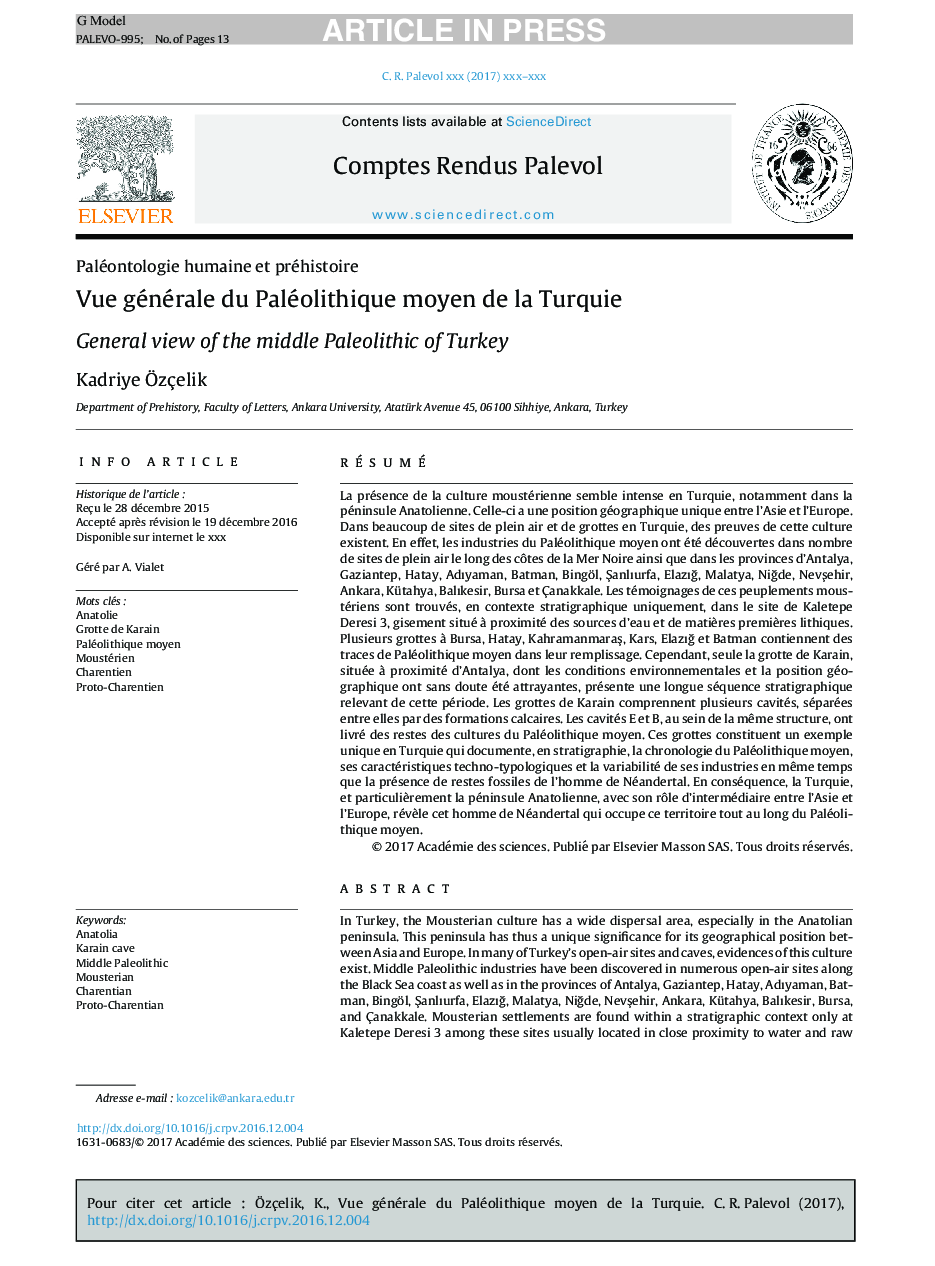| Article ID | Journal | Published Year | Pages | File Type |
|---|---|---|---|---|
| 8916128 | Comptes Rendus Palevol | 2018 | 13 Pages |
Abstract
In Turkey, the Mousterian culture has a wide dispersal area, especially in the Anatolian peninsula. This peninsula has thus a unique significance for its geographical position between Asia and Europe. In many of Turkey's open-air sites and caves, evidences of this culture exist. Middle Paleolithic industries have been discovered in numerous open-air sites along the Black Sea coast as well as in the provinces of Antalya, Gaziantep, Hatay, Adıyaman, Batman, Bingöl, Åanlıurfa, ElazıÄ, Malatya, NiÄde, NevÅehir, Ankara, Kütahya, Balıkesir, Bursa, and Ãanakkale. Mousterian settlements are found within a stratigraphic context only at Kaletepe Deresi 3 among these sites usually located in close proximity to water and raw material sources. Some caves in Bursa, Hatay, KahramanmaraÅ, Kars, ElazÄ±Ä and Batman exhibit traces of the middle Paleolithic within their stratigraphic context. However, only the Karain Cave, situated near Antalya, with its very suitable environmental conditions and geographic location, presents a very long stratigraphic sequence for the middle Paleolithic period. The Karain caves consist of many chambers separated from each other by calcified formations. Chambers E and B within the same structure contain remains of middle Paleolithic cultures. These caves provide a privileged example displaying a middle Paleolithic chronology in Turkey, especially with the techno-typological features and varieties of its industries in the stratigraphic sequence as well as with the presence of skeletal remains of Neandertals. Consequently, Turkey, especially the Anatolian peninsula with its bridging role between Asia and Europe, did the honors to Neandertal man who has lived there for a long time in middle Paleolithic period.
Related Topics
Physical Sciences and Engineering
Earth and Planetary Sciences
Palaeontology
Authors
Kadriye Ãzçelik,
